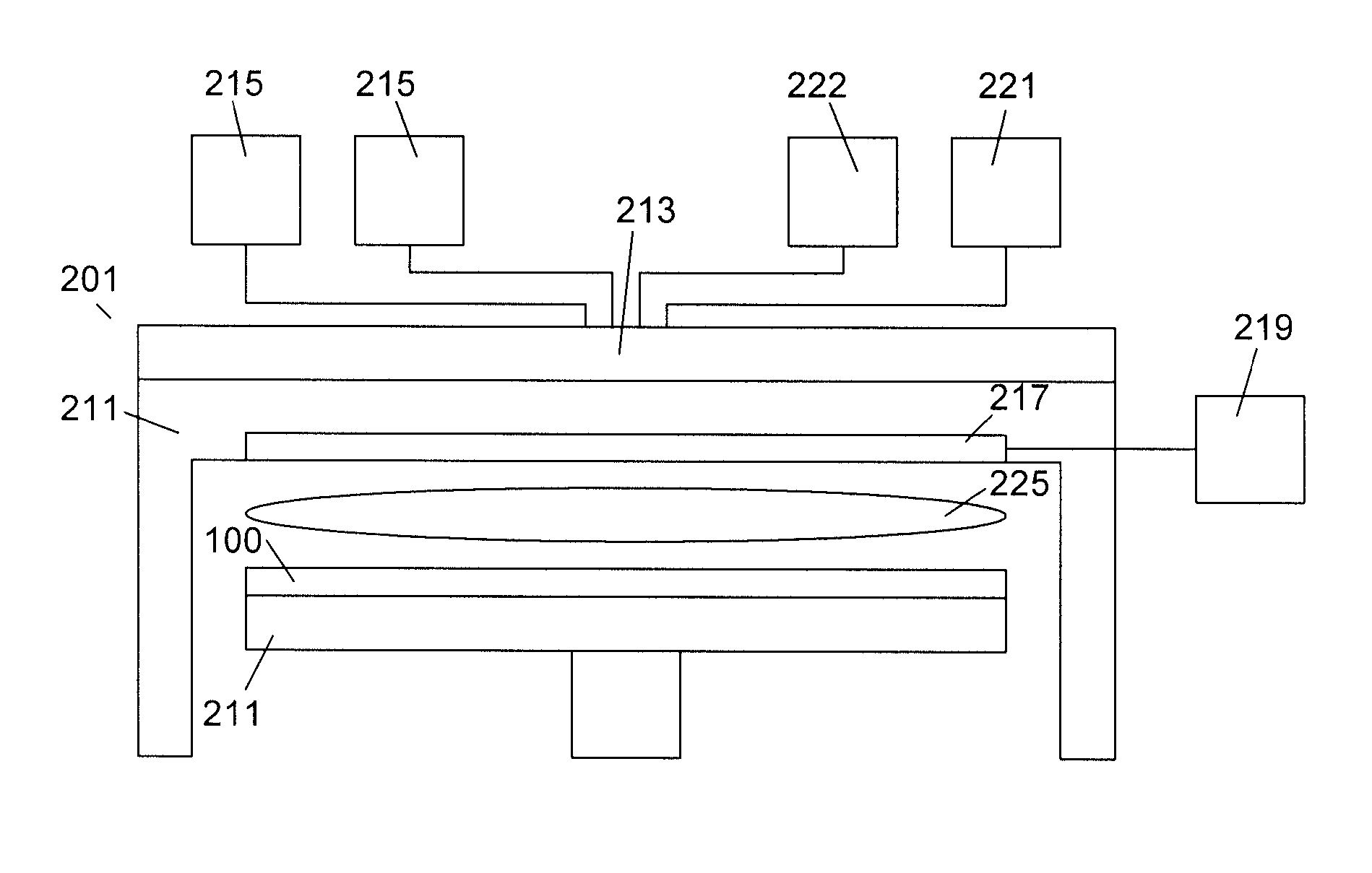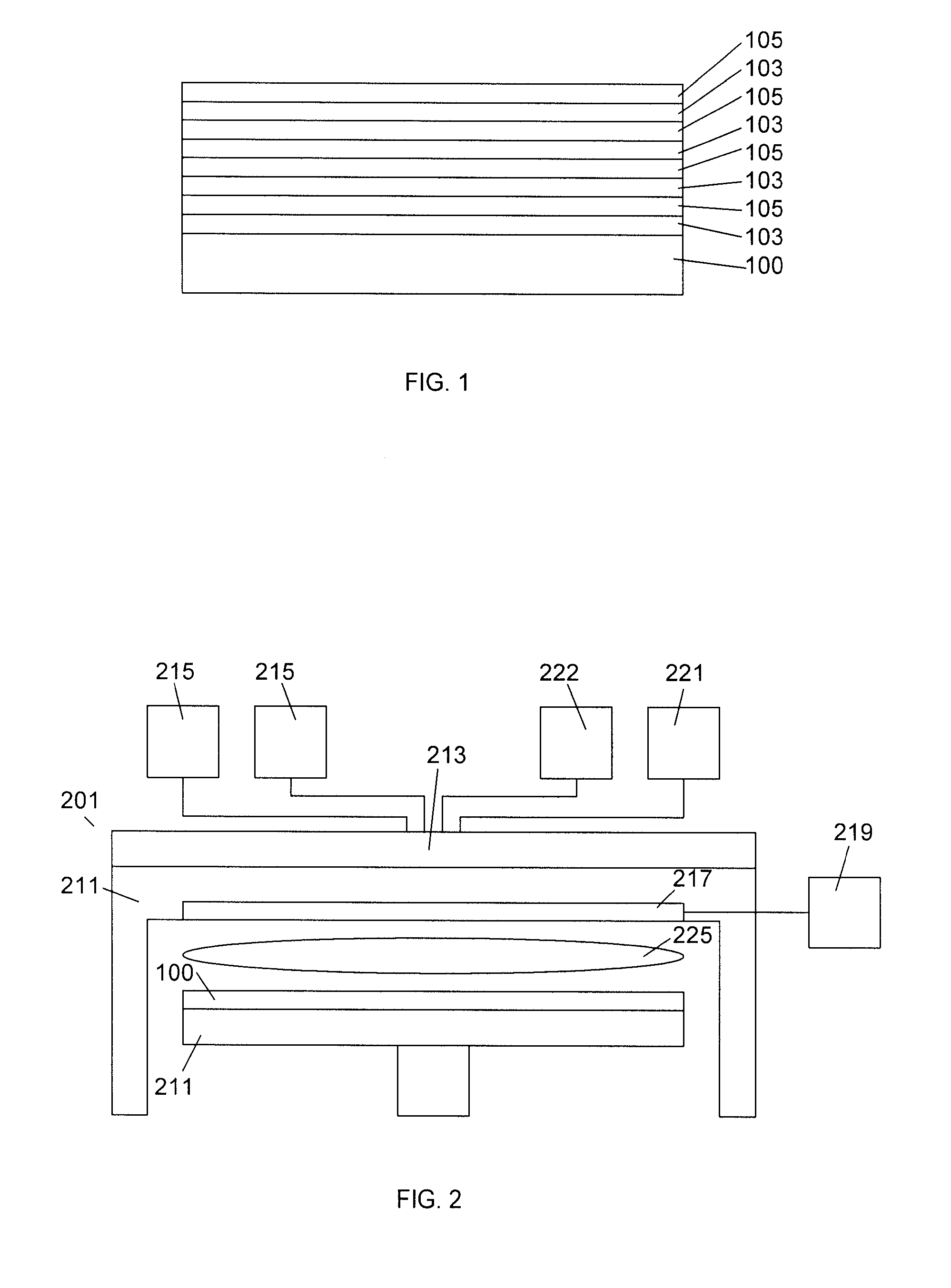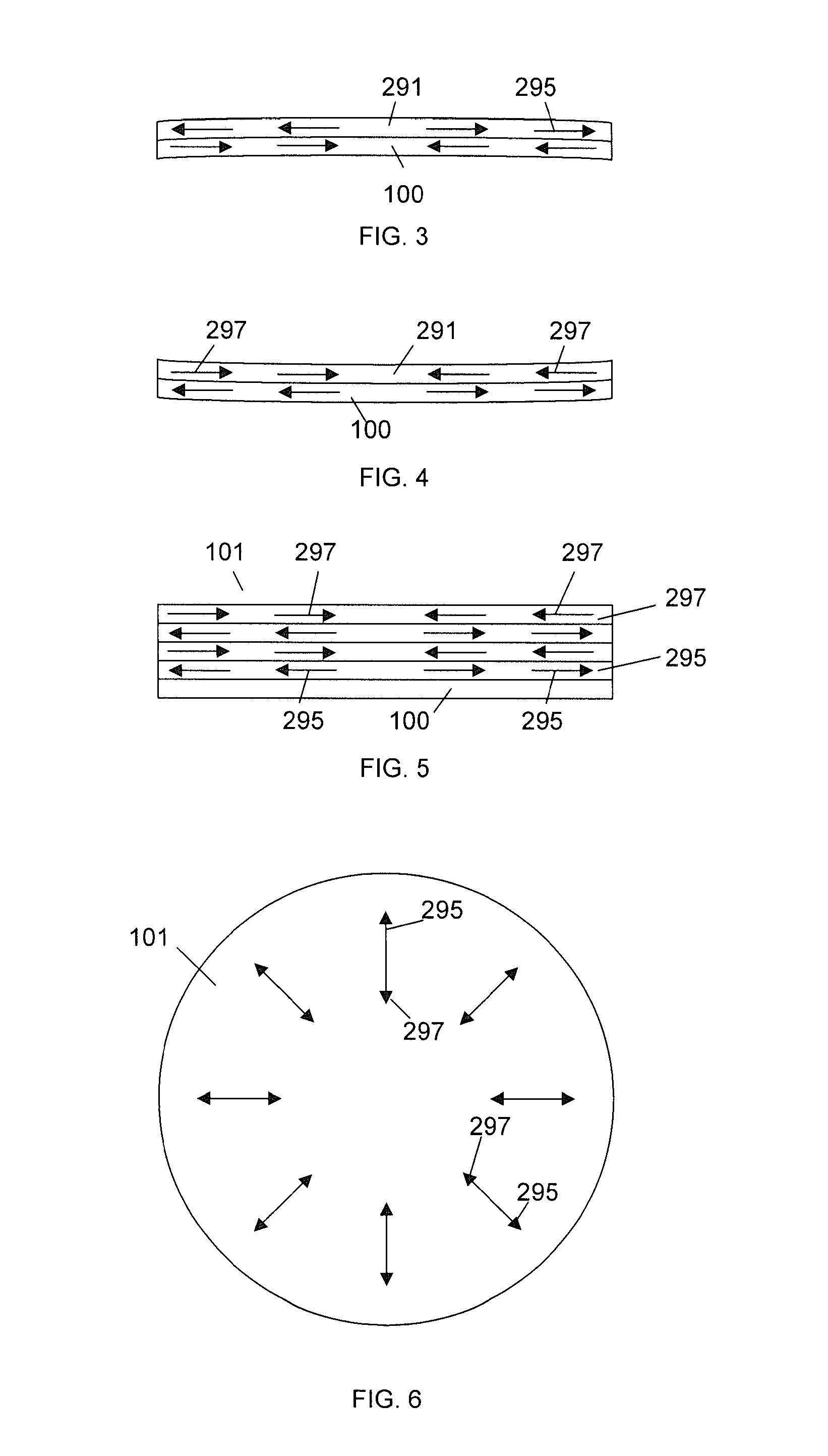PECVD oxide-nitride and oxide-silicon stacks for 3D memory application
a technology of oxide-silicon stacks and memory, applied in the field of material stacking and layered stacking, can solve the problems of inefficient depositing of each layer of material, and achieve the effects of avoiding delamination, avoiding delamination, and very strong bonding of adjacent materials
- Summary
- Abstract
- Description
- Claims
- Application Information
AI Technical Summary
Benefits of technology
Problems solved by technology
Method used
Image
Examples
Embodiment Construction
[0023]With reference to FIG. 1, in an embodiment, a multiple layer stack 101 is formed on a substrate 100 having a layer of a first material 103 and a layer of a second material 105. The subsequent layers can repeat this alternating pattern of first material 103 layers and the second material 105. In one embodiment, the first material can be an oxide and the second material can be a nitride. In other embodiments, the first / second material stacks can be oxide / silicon, silicon / doped silicon, or silicon / nitride. All of these combinations of materials can be used in Bit-Cost Scalable (BiCS), Terabit Cell Arry Transistor (TCAT) and other 3D memory structures. In other embodiments, the first / second material stacks can be other combinations of materials. The deposition order of the first and second material layers on the substrate can also be reversed.
[0024]The number of layers can depend upon the memory device being fabricated. In an embodiment, the stack numbers could be 8×, or 16×, or 2...
PUM
 Login to View More
Login to View More Abstract
Description
Claims
Application Information
 Login to View More
Login to View More - R&D
- Intellectual Property
- Life Sciences
- Materials
- Tech Scout
- Unparalleled Data Quality
- Higher Quality Content
- 60% Fewer Hallucinations
Browse by: Latest US Patents, China's latest patents, Technical Efficacy Thesaurus, Application Domain, Technology Topic, Popular Technical Reports.
© 2025 PatSnap. All rights reserved.Legal|Privacy policy|Modern Slavery Act Transparency Statement|Sitemap|About US| Contact US: help@patsnap.com



